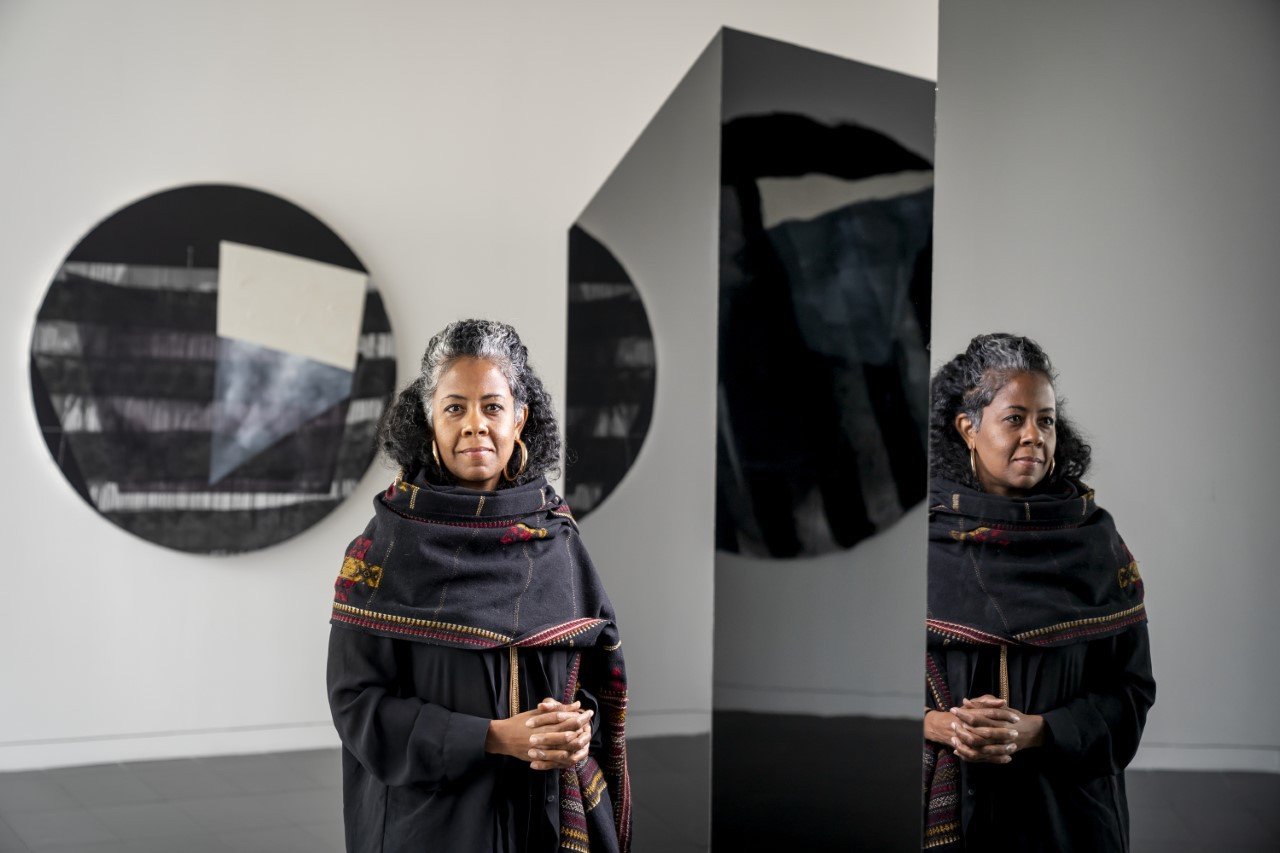
Pace launches its inaugural Pace Live performance programming this month, with events staged by Moroccan artist Yto Barrada and New York’s Torkwase Dyson, two women of color who address themes of political divisions and black cultural creation.
It kicks off this Friday, November 15, with a movie night organized by Barrada, dubbed Cinémathèque de Tanger, also the name of a theater she founded in Morocco. On Tuesday and Friday of next week, Dyson presents a performance and sculptural installation that incorporates numerous collaborators. It all takes place on the seventh floor of the mega-gallery’s new mega-facility on 25th Street in Manhattan, which seats 150. RSVP for Barrada here; for Dyson on November 19 here, and for November 22 here.
The programming is organized by a duo, Mark Beasley and Andria Hickey, both hired away from museums last year for newly created posts. “These are two artists I’m very much interested in because of their collaborative spirit,” Beasley told Artnet News. Using a metaphor for their belief in the artists, he said that “It’s just that good ingredients makes for fast cooking.”
Yto Barrada.
The gallery, which turns sixty next year, makes this bet on performance among a dramatic rise in attention to the ephemeral art form by museums and biennials, as well as other galleries. Anne Imhof’s edgy performance was a smash hit at the 2017 Venice Biennale, which went on to integrate more performance art in its current edition; museums have been renovating and expanding with large spaces devoted to the art form. (It’s not all ephemeral; taking place in a commercial gallery as it does, the inaugural Pace Live does incorporate some salable objects.)
Barrada’s contribution will consist of a presentation of ten short films by Middle Eastern and North African filmmakers.The films come from the collection of her Tangier movie house, which she and a group of other artists launched in 2007 with the mission of bringing international cinema to her hometown while helping popularize Moroccan filmmakers abroad. Its holdings comprise feature films, documentaries, and experimental works. (The movie house, which also serves as an interdisciplinary cultural hub, was created in the wake of 9/11, when Middle Easterners and North Africans found their access to Europe increasingly curtailed.)
The seventh floor at Pace’s new Chelsea home will host Pace Live performances.
Also on view at Pace will be Moroccan textiles and Barrada’s wooden sculptures of defunct Tangier movie houses, which satellite dishes and DVDs largely put out of business, according to the artist. And bring your appetite; Barrada is offering a Moroccan-style family meal after the screening.
Presented in collaboration with the newest edition of performance art biennial Performa, Dyson’s contribution the following week, I Can Drink the Distance: Plantationocene in 2 Acts, invites black creators like Canadian poet and novelist Dionne Brand; artist Arthur Jafa; and interdisciplinary artist Autumn Knight into the space to engage with Dyson. The collaborations are all based on her theory of “black compositional thought,” and her guests will work in interaction with a sculpture by the artist, which will remain after the performances and is available to buyers. Some of the performances will involve readings, while some will incorporate music, dance, or audience interaction. It’s not entirely clear what will happen, says Beasley, which, he acknowledges, can be terrifying.
“This is the story of the moment,” said Beasley, leaning into that daunting uncertainty. “These are the voices that need to be heard.”